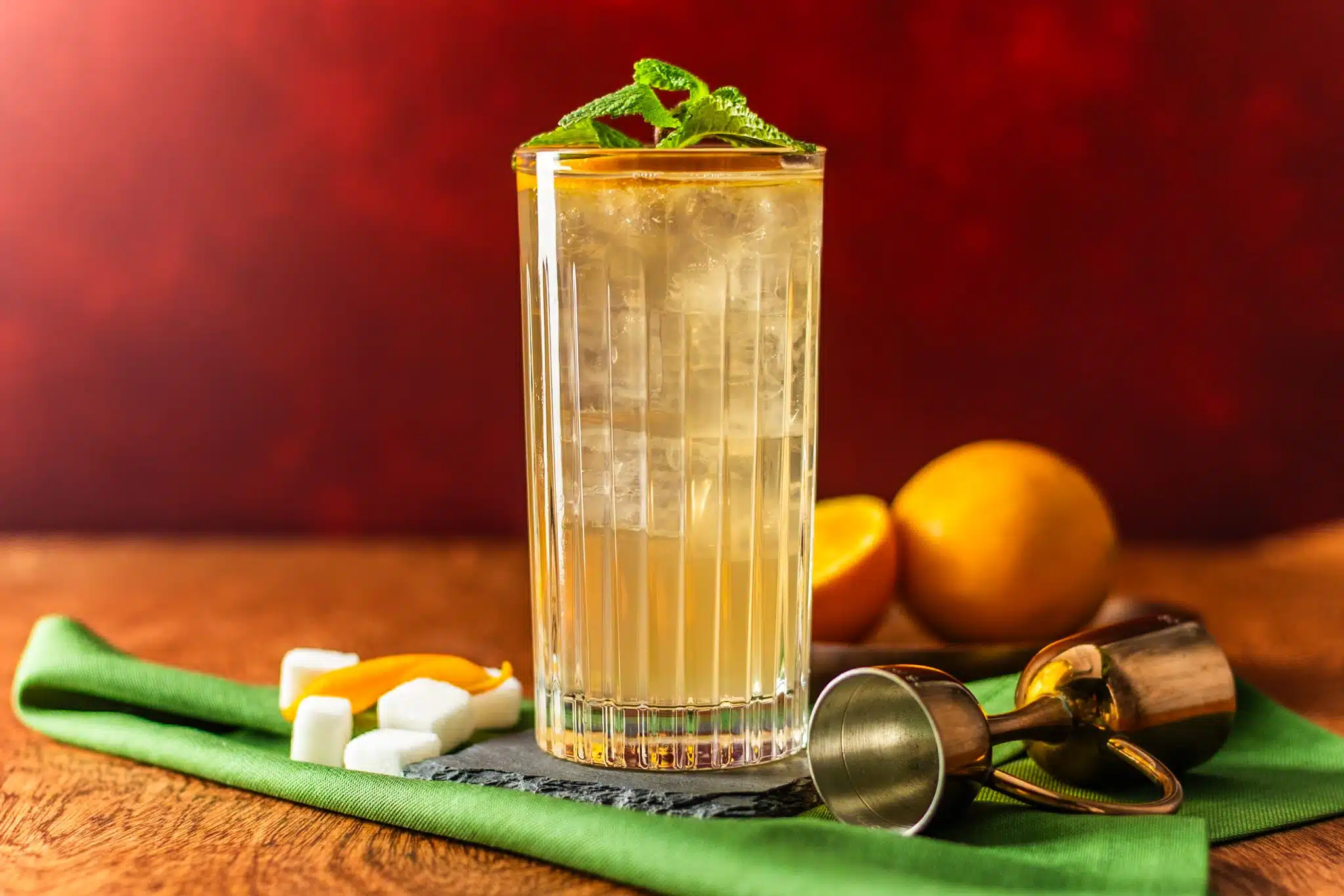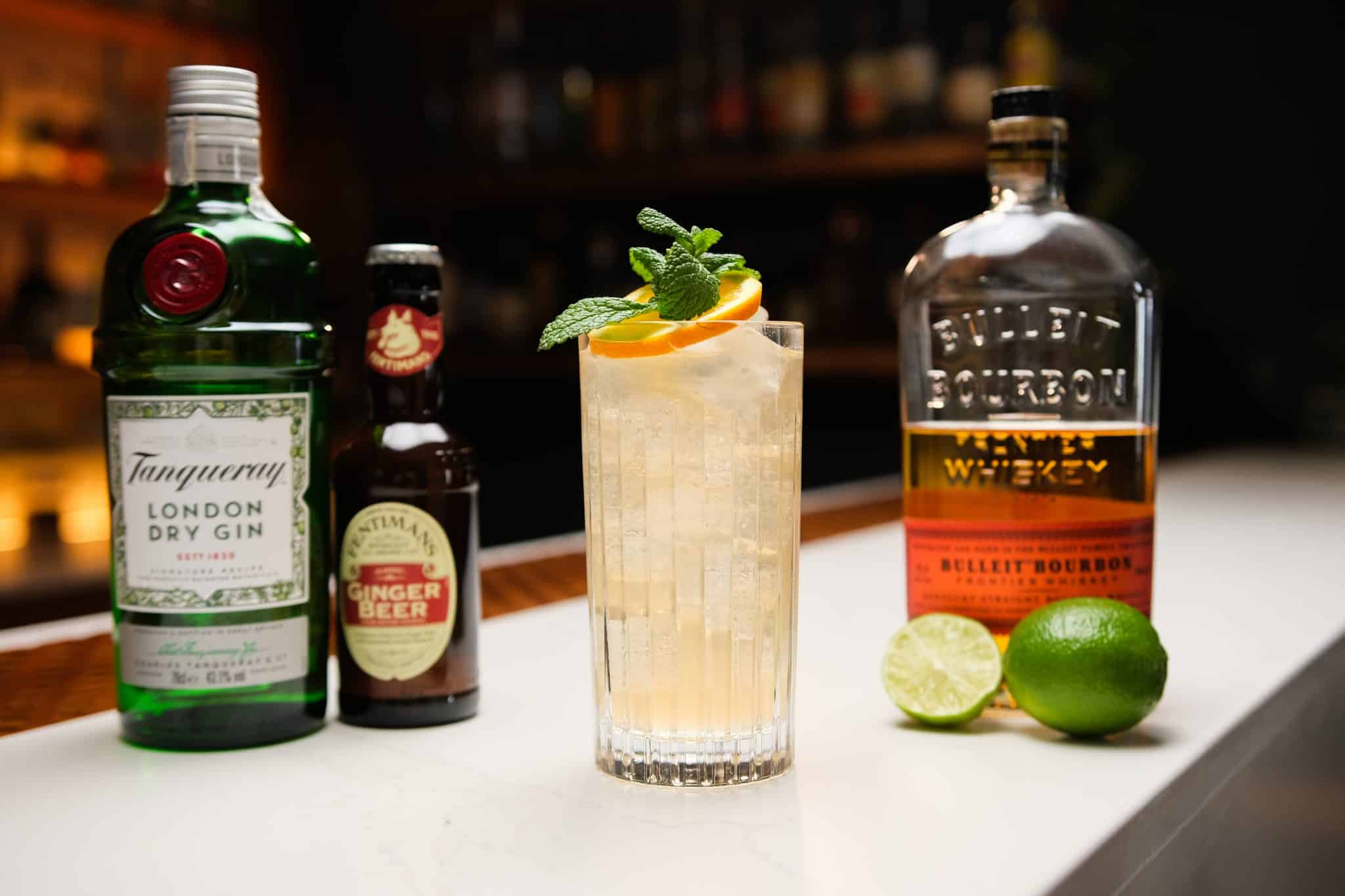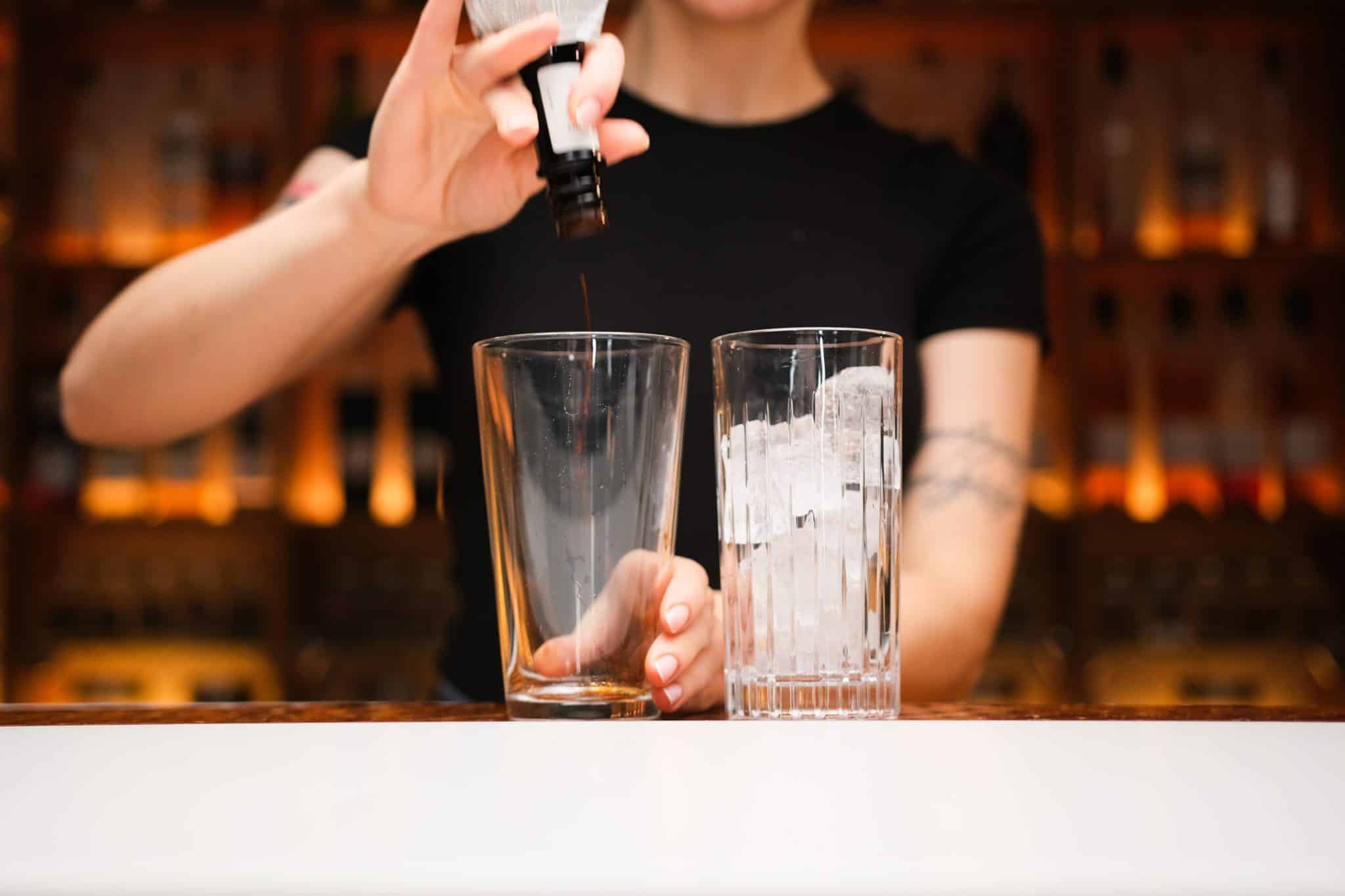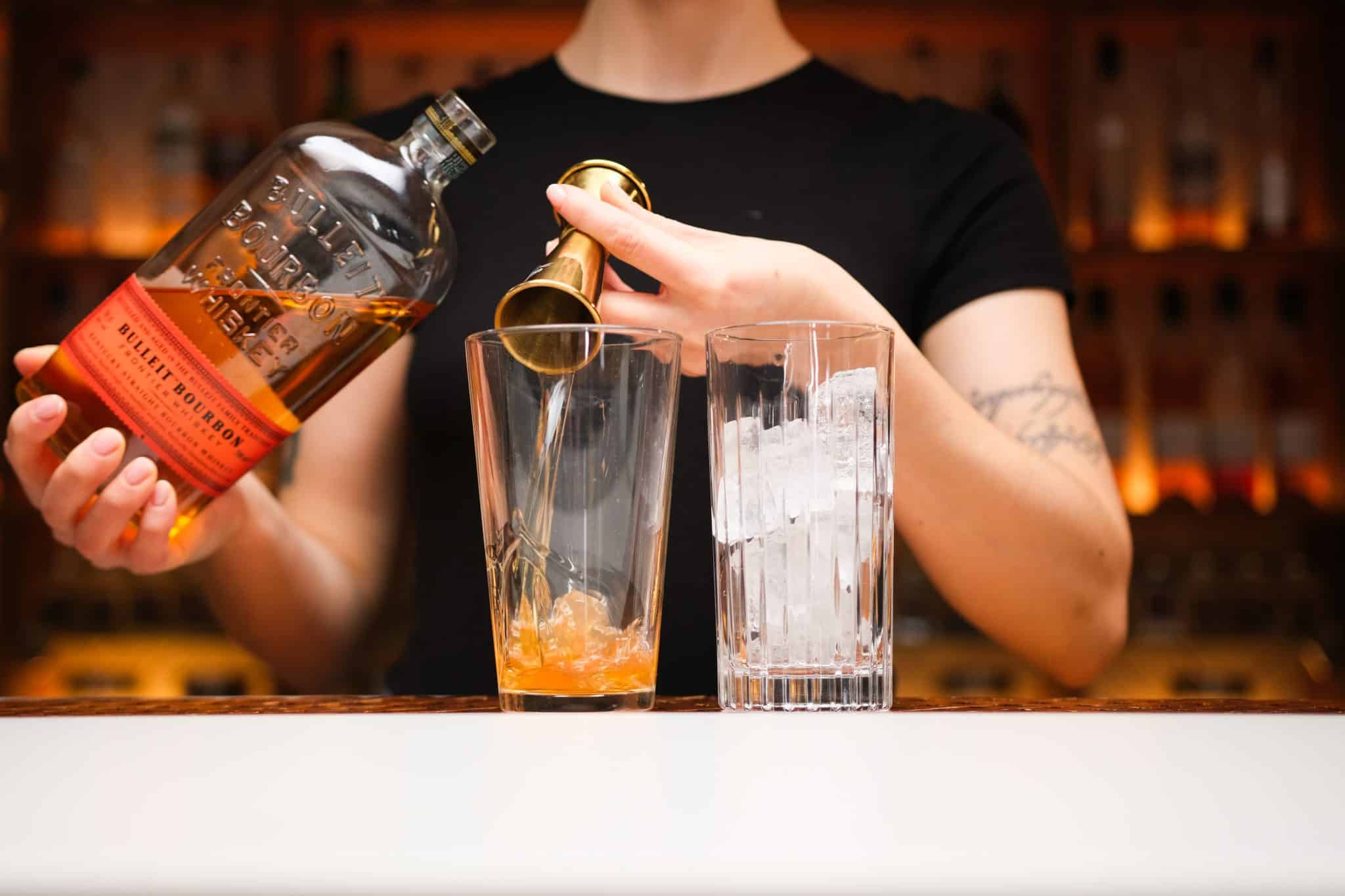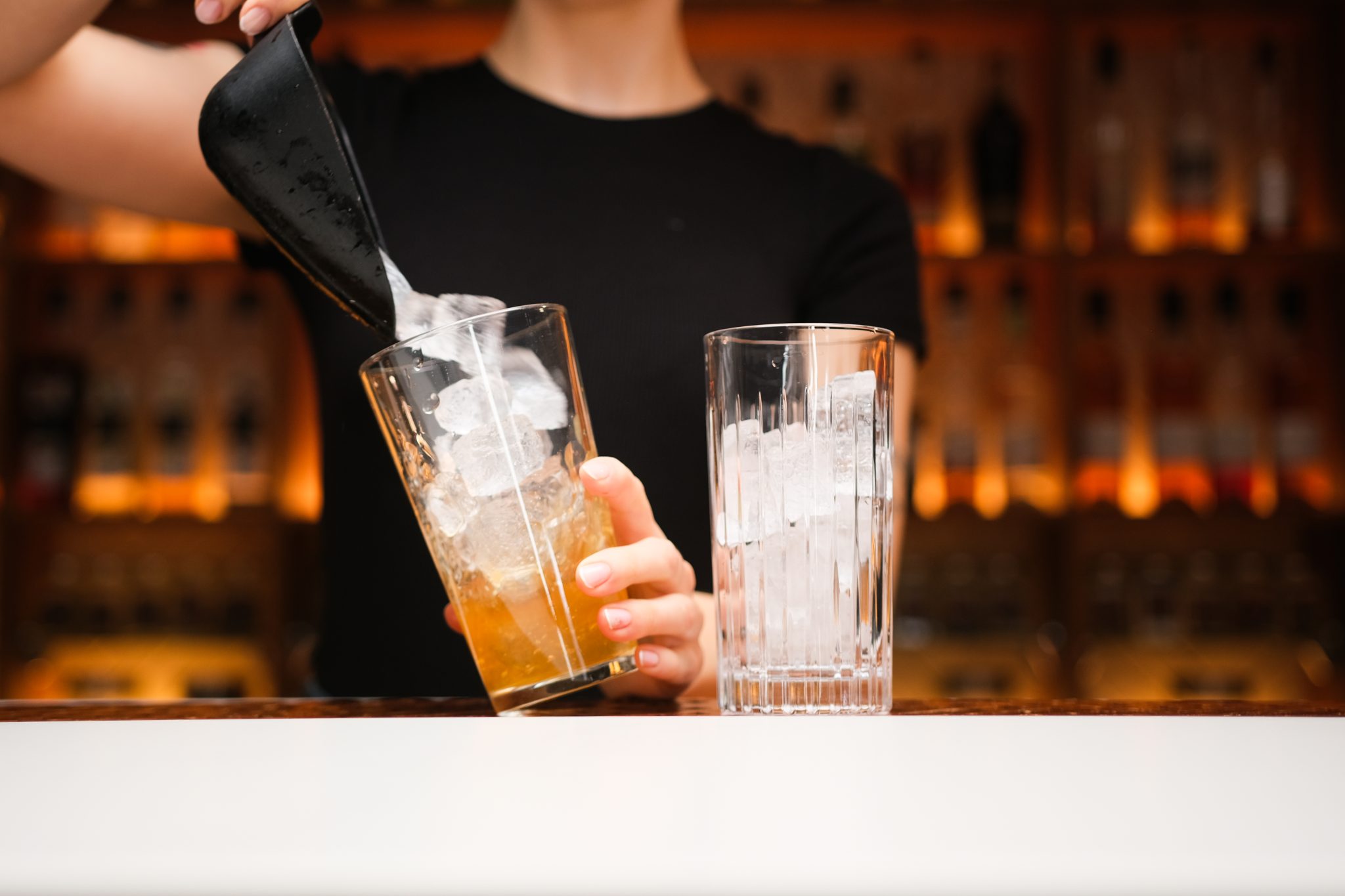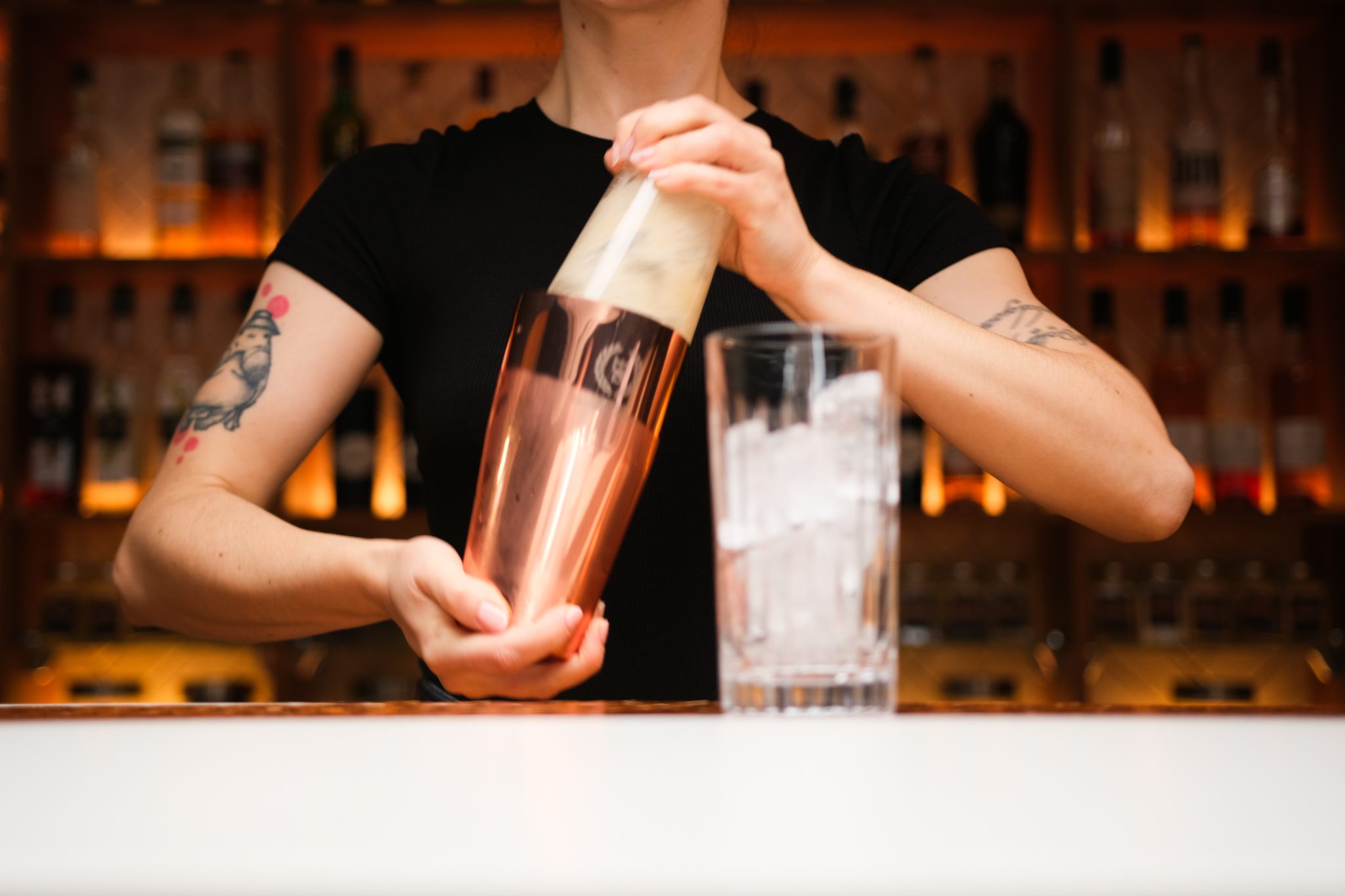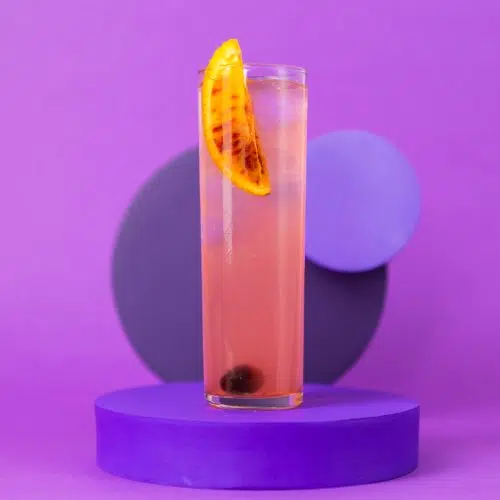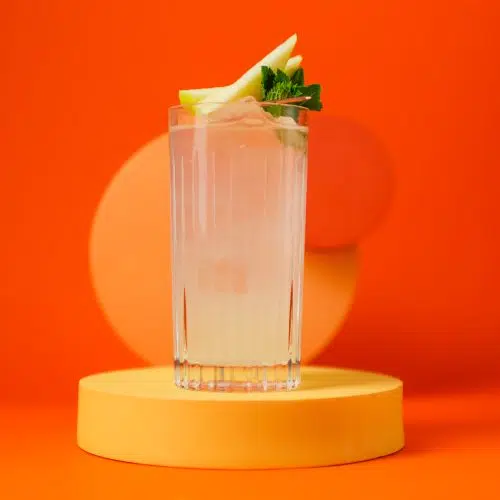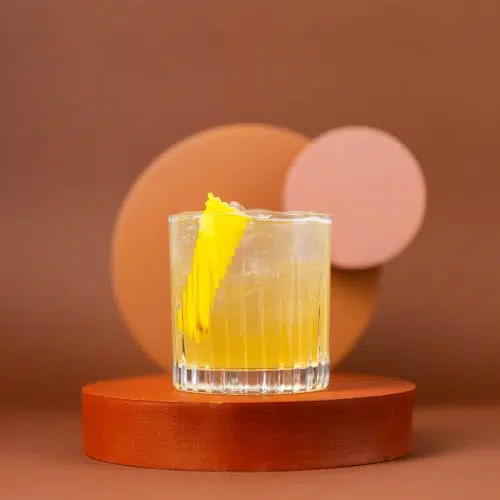
Try this uncomplicated Suffering Bastard recipe, combining the boldness of spirits with the coolness of citrus, designed for your effortless summer enjoyment!
Prep time:
1 minute minute
Mixing time:
2 minutes minutes
Servings:
1
Calories:
178
Ingredients
- 1 oz Bourbon
- 1 oz Gin
- ½ oz fresh lime juice
- 1 dash Angostura aromatic bitters
- 4 oz ginger beer - chilled
- Ice cubes
- Mint sprig or orange slice - for garnish, optional
Equipment
- Highball Glass
- Measuring Jigger
- Stirrer or Bar Spoon
- Shaker Set
- Strainer
Instructions
- Chill glass: Start by stirring some ice cubes in your highball glass to chill it.
- Add Bitters: Include 1 dash Angostura aromatic bitters for depth of flavor.
- Add Lime Juice: Squeeze for that citrus zing in ½ oz fresh lime juice.
- Add Bourbon: Pour 1 oz Bourbon into your shaker.
- Add Gin: Follow the bourbon with 1 oz Gin.
- Shake: Add ice into your shaker and shake for about 15 seconds.
- Strain: Strain the drink in a highball filled with fresh ice cubes.
- Top with Ginger Beer: Fill the rest of the glass with about 4 oz ginger beer.
- Stir Gently: With a bar spoon, gently stir your concoction to mix the flavors.
- Garnish: Embellish your drink with a sprig of mint or an orange slice.
Notes
Substitutes:
- Bourbon: No bourbon? Try with brandy, some say to be the original ingredient. Or step into the tiki era and use Rum instead. The flavor profile will shift, but they bring unique charm to the drink.
- Gin: If Gin's botanicals aren't your thing, a mild vodka can slide in without overshadowing the other flavors.
- Angostura Bitters: If these are missing from your cabinet, orange bitters can be a great alternative, adding an extra citrusy dimension.
Making a Pitcher of Suffering Bastard:
- Scale: Serving a crowd? Just multiply all ingredients by 8 for a pitcher. You'll need 8 oz of bourbon and Gin, 4 oz of lime juice, 8 dashes of bitters, and 32 oz of ginger beer.
- Mix: Combine the bourbon, Gin, lime juice, and bitters in a pitcher. Stir well, then chill in the fridge. Right before serving, add the ginger beer for effervescence.
Making it Non-Alcoholic:
- Bourbon/Gin Substitute: Non-alcoholic spirits are available, or you could mix apple cider vinegar and vanilla extract to mimic bourbon's sweetness and depth. For Gin, a non-alcoholic alternative or a splash of tonic with a few crushed juniper berries can work.
- Proceed As Usual: Replace the regular spirits with these substitutes and follow the original steps for a mocktail version of the Suffering Bastard.
Making it Vegan:
- Gin and Bourbon: They are usually vegan-friendly, check the label anyway for certified vegan products.
- Bitters: Ensure the brand of Angostura bitters you're using is vegan, as some bitters use animal products in the filtration process.
- Garnish: Stick to plant-based garnishes like the classic mint sprig or orange slice.
What is a Suffering Bastard?
A Suffering Bastard cocktail combines bourbon with Gin, fresh lime juice, bitters, and ginger beer. This drink is often sought for soothing hangovers. The IBA(International Bartender Association) recognize the drink as one of the “New Era Drinks”.
What is a Suffering Bastard made of – The ingredients
Get these ingredients ready to make your own Suffering Bastard:
- Bourbon: Provides a rich, deep sweetness and a woody backbone to the cocktail’s profile.
- Gin: Introduces a layer of herbal notes and complexity due to its botanicals.
- Fresh Lime Juice: Adds a tangy zest, brightening the drink and balancing the sweetness.
- Angostura Bitters: Infuses the cocktail with subtle spices and botanicals, enhancing its depth of flavor.
- Ginger Beer: Offers a bubbly carbonation and a spicy-sweet finish that complements the stronger spirits.
- Ice Cubes: Chills and slightly dilutes the mixture for a more mellow drinking experience.
- Mint Sprig or Orange Slice (for garnish, optional): Adds a visual appeal and an extra aromatic element upon serving.




